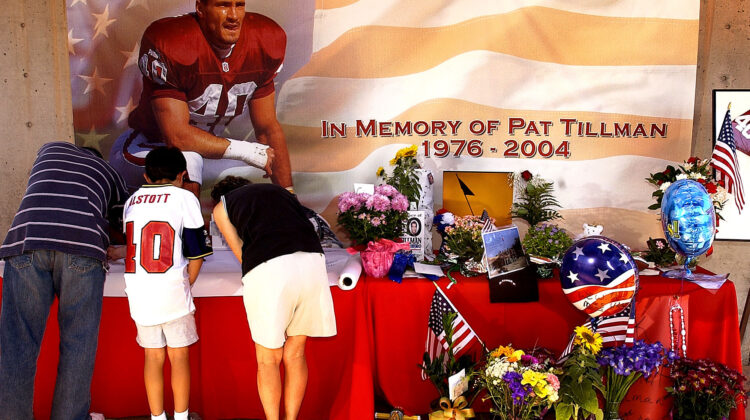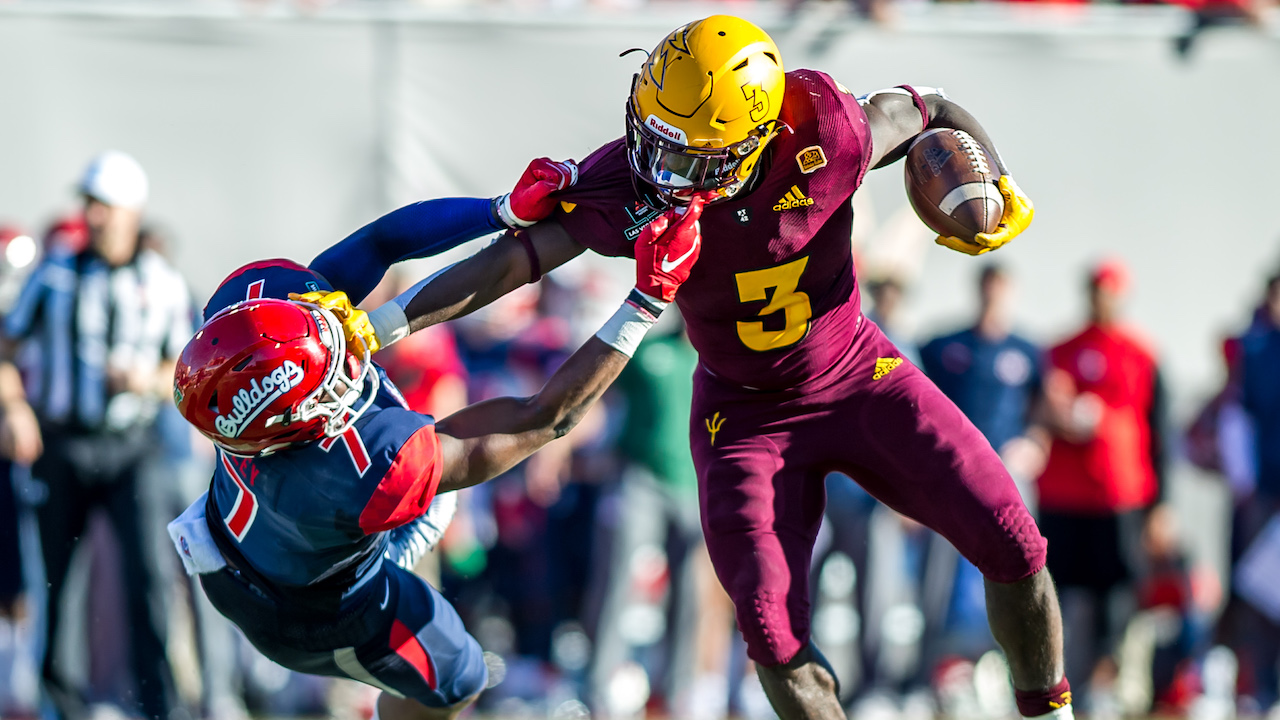By Kent Somers
Anniversaries come with a variety of emotions attached, depending upon the event being acknowledged.
Happiness. Love. Gratitude. Regret. Sadness. Anger. Melancholy.
And, sometimes, they are mixed so thoroughly that it’s impossible to sort and identify just one to describe what and how we are feeling.
That applies to me, and perhaps you, too, this month as we acknowledge that it’s been 20 years since Pat Tillman was killed in Afghanistan.
That’s not to say that I knew Pat well. We were friendly, not friends.
As the Cardinals beat writer for The Arizona Republic, I covered Pat’s four NFL seasons and was one of the three reporters called into a meeting with former coach Dave McGinnis in the spring of 2002. He stunned us with six words:
“Pat Tillman is joining the Army.”
I was at the Cardinals Tempe headquarters when Tillman said good bye to his friends before reporting for duty. Half-jokingly, I told him that if he ever decided to talk about his decision to serve the country to not forget his friendly, local beat writer.
“That’s not going to happen,” he said, smiling. And it never did.
And I was there in April of 2004 after news broke that he had been killed.
The sadness was profound, but obviously not at the level experienced by those close to him.
 Tillman’s selfless decision, and, really, his entire life, was never going to be forgotten. But it’s amazing the impact he’s making 20 years after his death. He left a legacy, and his family, his friends, and probably you, have nurtured it.
Tillman’s selfless decision, and, really, his entire life, was never going to be forgotten. But it’s amazing the impact he’s making 20 years after his death. He left a legacy, and his family, his friends, and probably you, have nurtured it.
Earlier this month, nearly 30,000 people participated in the 20th Pat’s Run, which was started by a small group of Pat’s friends. Since its inception in 2004, the Pat Tillman Foundation has awarded $35 million to more than 850 scholars pursuing advanced degrees and leadership roles.
We wear Pat’s Arizona State and Cardinals jerseys to games. We tell our kids and grandkids his story. We visit his statues at State Farm and Sun Devil Stadiums. We name schools after him, as the Balsz School District in Phoenix did two years ago, 18 years after Pat died.
“I walked in here and I could barely breathe,” Kevin Tillman, Pat’s brother, said at the celebration of the school’s renaming. “There’s so much energy here, and he (Pat) loved that. The fact that this community has named a school in his honor, he would be quite tickled with that.”
There is also a special energy at every Pat’s Run, which takes place in Tempe and throughout the world via satellite and individual “virtual” runs.
There are almost 5 million people in the Phoenix Metropolitan area, but for at least one Saturday every spring, a big city seems like a small town. It’s 7 a.m. People have fought traffic, road closures and parking challenges to run or walk 4.2 miles. Yet, everyone is happy.
They are because participating in the Run is one way to acknowledge Pat’s life.
Years ago, I heard a speech from someone who said his father always told his kids as they left “remember who are you and what you stand for.”
In many ways, we remember who Pat was and what he stood for.
It’s what motivated Jim Omohundro, director/executive producer of Cardinals radio and audio content, to save Pat’s locker from demolition during a renovation at the team facility several years ago. That locker is on display at Cardinals headquarters ever since. It, too, is a reminder of who Pat was and what players and the organization should aspire to be.
Most of the new players don’t have to be told Pat’s story. They already know it.
“I’ve obviously long been a fan of Pat Tillman – what he stood for, who he was and everything about his legacy is unbelievable to me,” retired defensive linemen J.J. Watt told azcardinals.com shortly after he signed with the team in 2021.
https://www.azcardinals.com/news/j-j-watt-a-shoe-in-to-honor-pat-tillman
“So to be here, to be walking the same halls that he walked and to see his locker today was special for me.”
It can be hard to articulate exactly why Pat’s story resonates as strongly today as it did 22 years ago, when he informed McGinnis he was leaving the NFL and a $3.6 million contract behind to become an Army Ranger.
That day, McGinnis asked Pat how he was going to handle the oncoming “sh—storm” of media attention.
“I’m not,” Pat said with a smile. “You are.”
Pat didn’t see the decision as any more unique and selfless than that of others who choose to enlist. He wasn’t in it for the publicity and turned down all media requests.
It was admirable, selfless and part of a decision many of us would not have dreamed of making, a Tillman Scholar told me a couple of years ago.
“If we all had that level of selfless service and love for one another, the world would be a much better place,” said Bernard Toney, Jr., who retired from the Army after 21 years of service and holds a Doctor of Medical Science degree.
“And I think he left that legacy, that mark, for us to be able to try to reach.”
Twenty years later, that legacy endures. And that mark appears indelible.





